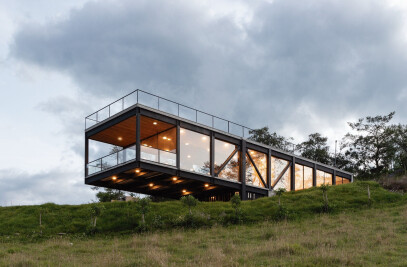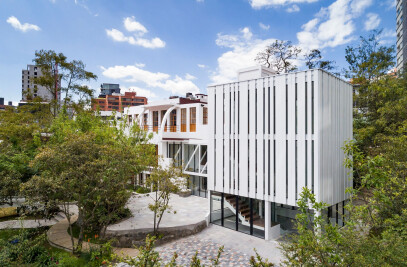This house was designed at the beginning of the COVID-19 pandemic, the reason why the architectural program as well as the concept were based on what housings were already experimenting during the second trimester of 2020. As architects, we reconsidered the lifestyle we led, but above all, the importance of housing during that moment of lock down; which somehow, had been left aside with the contemporary paradigm of compact cities, where social relations are carried out in public spaces.

These reflections motivated us to rethink the typical operating modes that were established and to generate them in housing: working spaces, open and ventilated spaces, family spaces, exterior quality spaces and spaces for the elderly. Our project was endowed in a conscious way with these conditions.

The clients required a main house of 220 m2 for a family of four members: a couple and two daughters and a second housing unit with half of the main house’s surface. This second house or flat will be for the grandparents. Additionally, they needed a generous parking and storage area.

One first task was to solve both housing units in one level and for both of them to have access to the exterior spaces, as well as to contemplate privacy and independence for each, in a land of 600m2. We took advantage of double-sloped topography to do so. On the front axis, we placed the garage in the side which had to be buried and where the access road was already lower, we placed the smaller house unit, which benefits from an exclusive front garden.
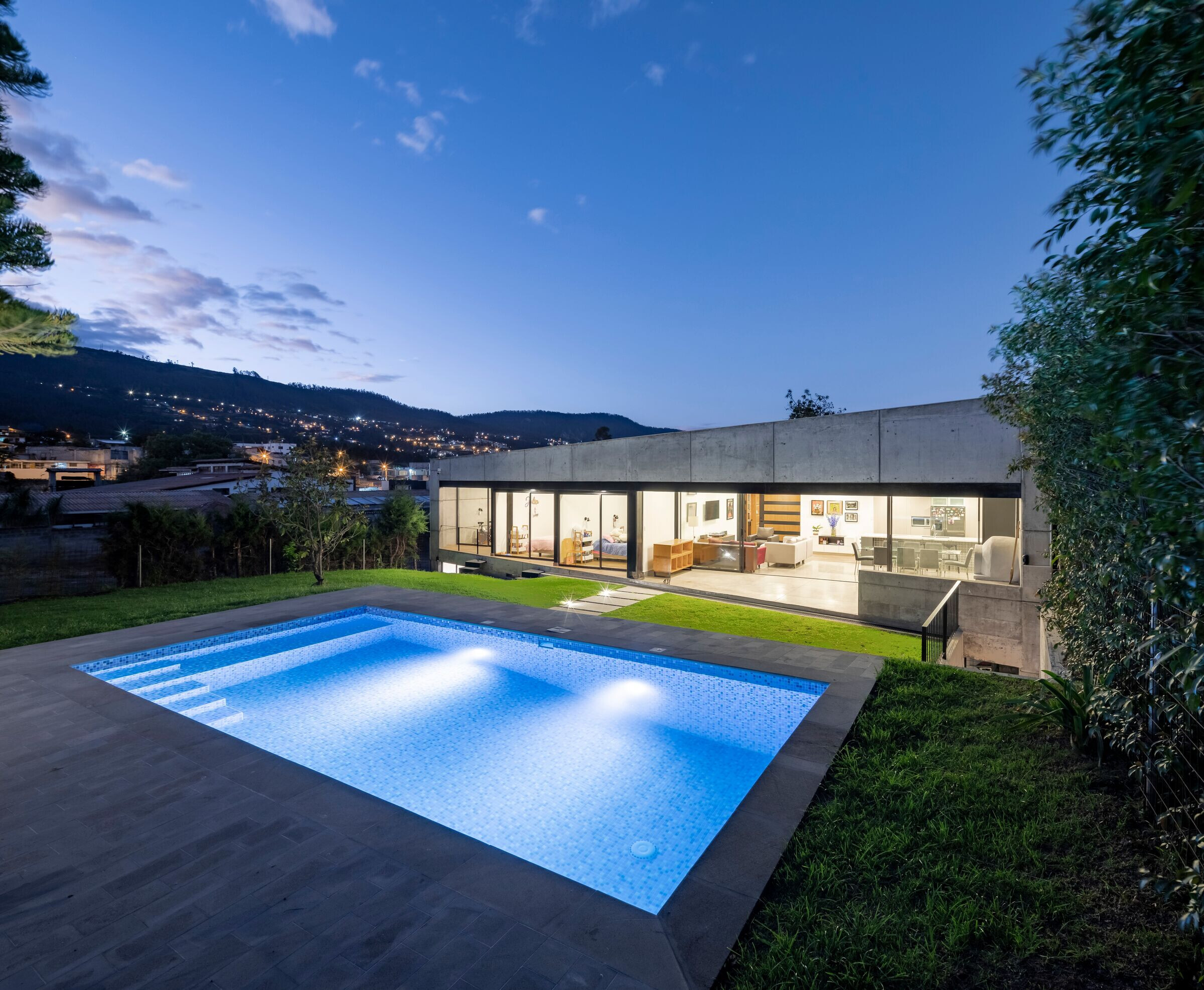
In the lateral section, we were guided by the natural topography, in order to have direct access to the backyard of the main house which is placed on a second (higher) level. This house is above the second (and smaller) house and the garage. The main house’s social area is accessed directly and leads to a great porch which is connected to the garden and the swimming pool. Also, all the rooms have an independent and direct access to the back garden through steps which increase as the topography increases. The master bedroom, which is the final space of the bar-shaped house, is placed one and a half meters above the garden’s level. This difference, as well as its own terrace offers privacy to the main bedroom.
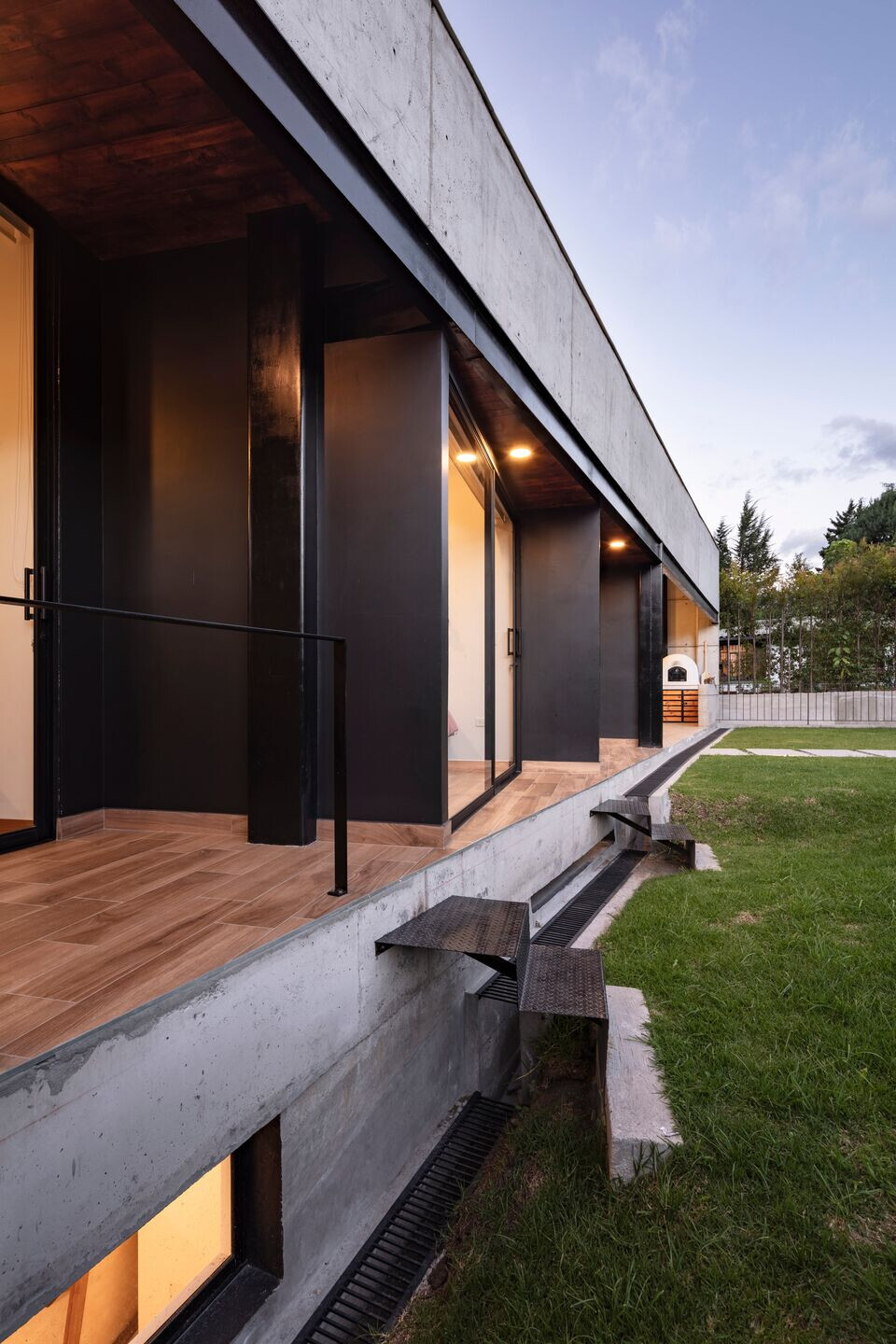
The main house’s implantation is a trapeze, similar to the morphology of the land. The house is frontally distanced five meters from the street, giving space for a front garden (which belongs to the second house) and for the car’s access. This let us compact the architectural program in order to generate a plentiful backyard to be used by the family of the main house.
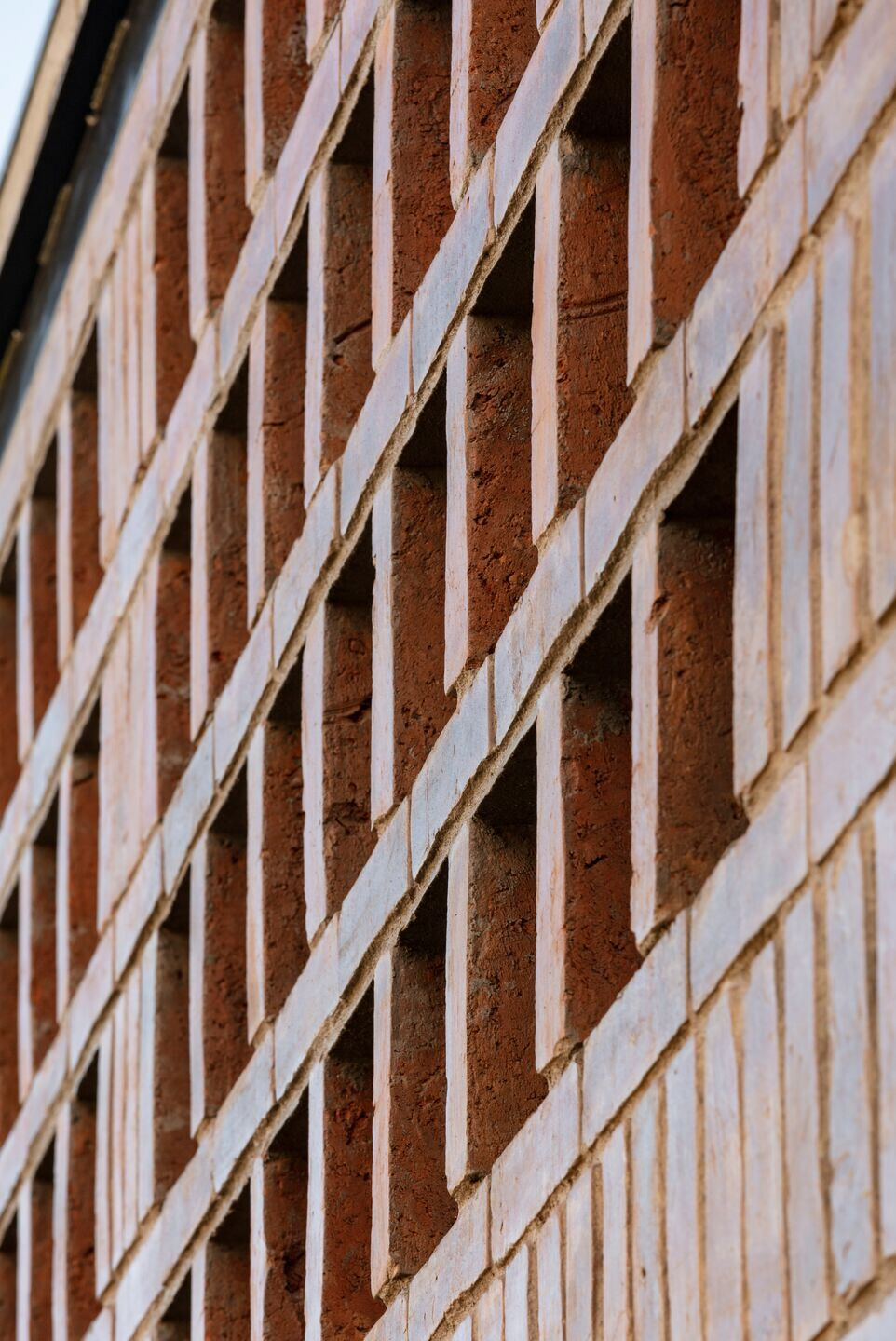
We also took advantage of the norms; there is a municipal ordinance which enables lateral attachments as long as the maximum height is 4.00m. We intended to make the volume occupy the total dimension of the land in width in order to generate more green space and to occupy the side attachments with an architectural program, which is why we grew the roof up to 4.00m in each of the trapeze’s vertices. This allowed us to have a roof following the land’s original slopes.

The constructive system is quite simple: two structural, lateral, concrete walls are held together by a perpendicular concrete wall which also solves the land’s slopes and a steel beams system that supports a light weight roof, allowing us to have large structure free dimensions and open spaces. The front facade is composed of a handmade brick skin with a pattern which helps create lattices and controlled openings to support each interior space’s illumination as required.
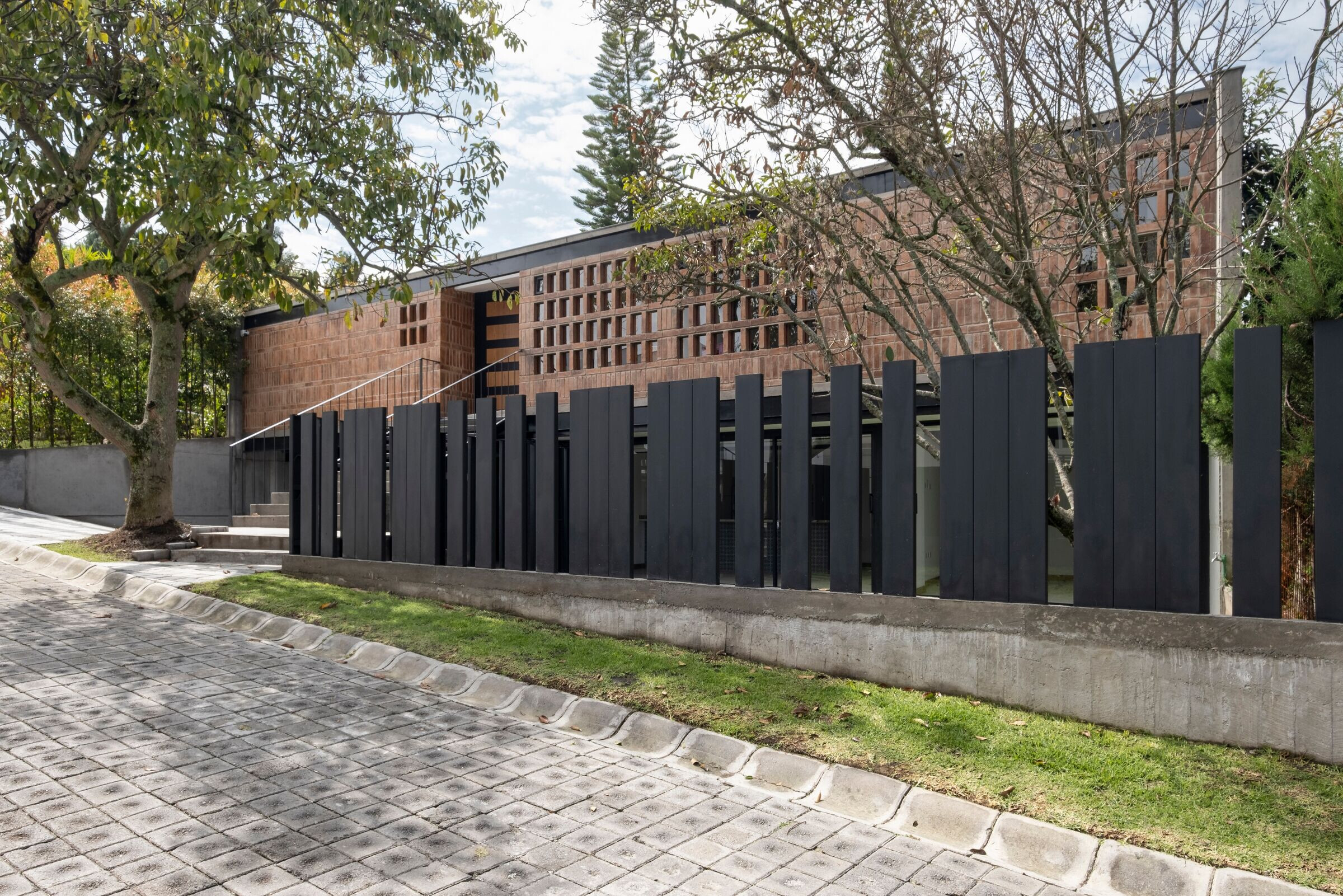
This is a very synthetic project that fuses topography, showing itself as discrete in site, hiding in between the vegetation, with great quality indoor spaces. It was built with traditional, local materials as concrete, brick and steel which bough together a contemporary building for the contemporary living requirements, considering housing as the main character in family’s life.

Team:
Architects: Bernardo Bustamante Arquitectos
Project Team: Arq. Bernardo Bustamante, Arq. Doménika Baquero, Arq. Gabriela Jaramillo
Photographer: Bicubik Photography
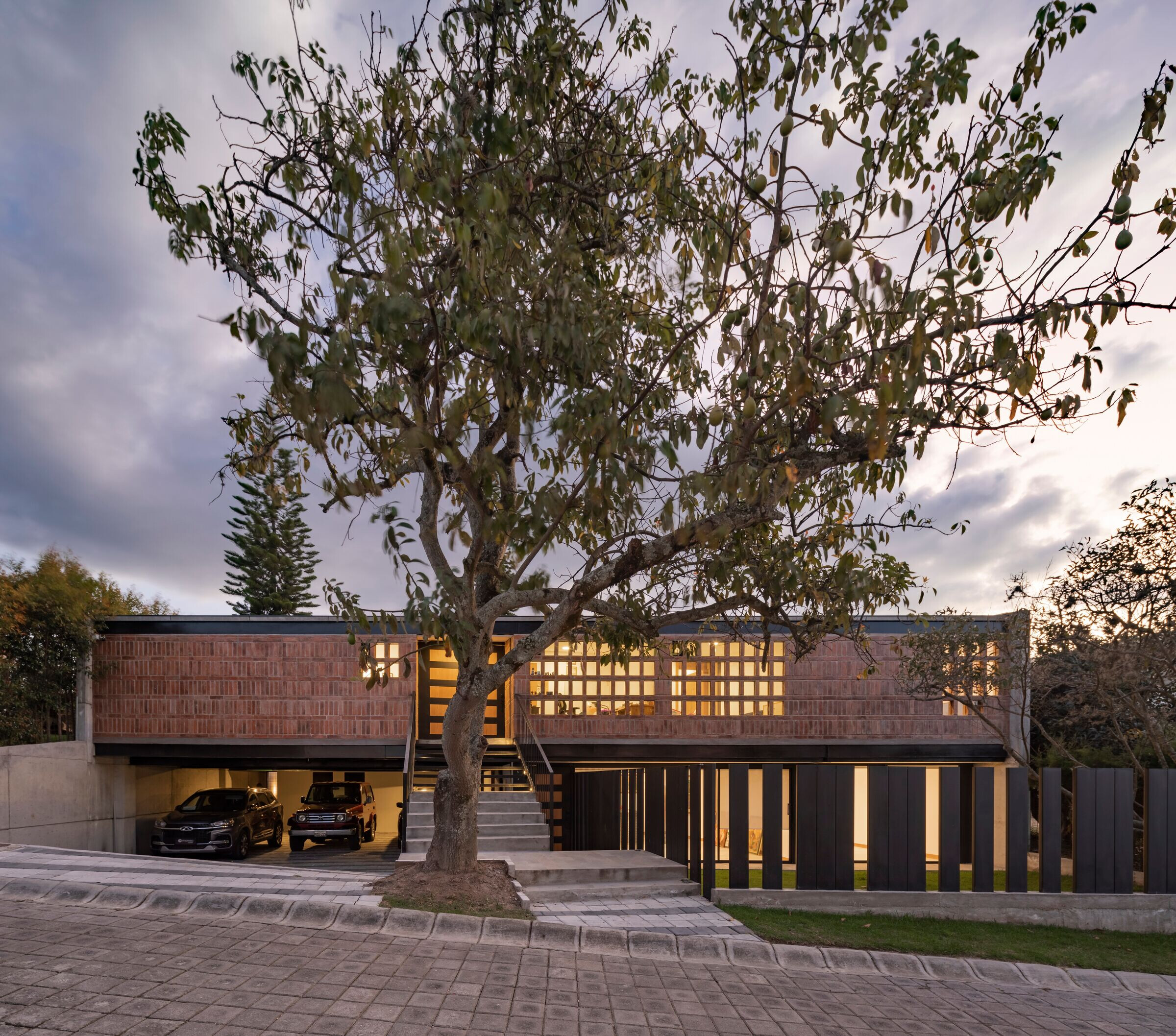
Materials used:
Kitchen: Rodes
Electric: Veto
Structure: Gaston Caro
Pool and equipment: Ricaurte Guarderas
Sanitary fittings: FV
Covering: Graiman



























